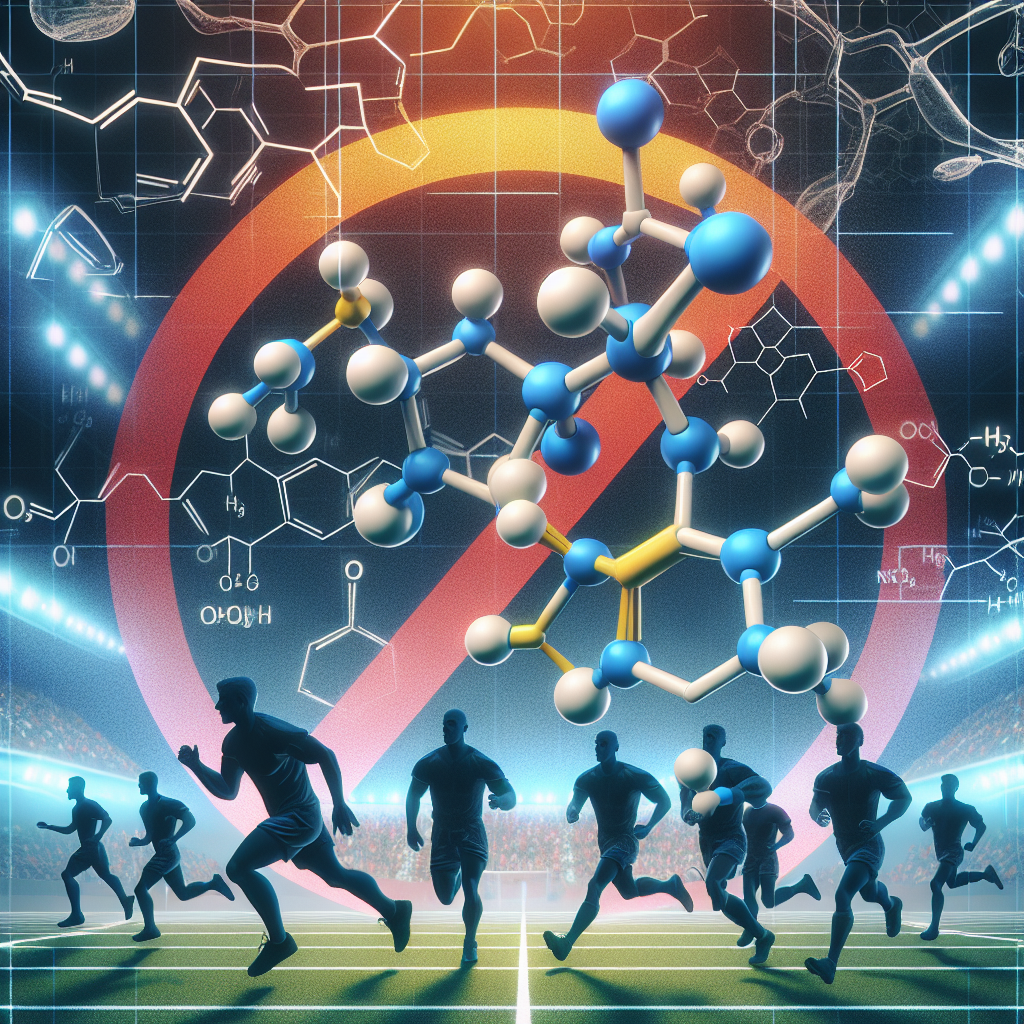-
Table of Contents
Dehydroepiandrosterone Use in Sports Doping
Dehydroepiandrosterone (DHEA) is a naturally occurring hormone in the human body that is produced by the adrenal glands. It is a precursor to testosterone and estrogen, and plays a role in the body’s metabolism, immune function, and sexual development. In recent years, DHEA has gained attention in the sports world as a potential performance-enhancing drug. However, its use in sports doping is highly controversial and has been banned by many sports organizations. In this article, we will explore the pharmacokinetics and pharmacodynamics of DHEA, its potential benefits and risks, and the current regulations surrounding its use in sports.
Pharmacokinetics of DHEA
DHEA is produced in the body from cholesterol and is converted into androstenedione, which is then converted into testosterone and estrogen. It is primarily metabolized in the liver and excreted in the urine. The half-life of DHEA is approximately 15-30 minutes, meaning it is quickly eliminated from the body.
When taken orally, DHEA is rapidly absorbed and reaches peak levels in the blood within 30-60 minutes. However, its bioavailability is low due to extensive first-pass metabolism in the liver. This means that only a small percentage of the ingested DHEA actually reaches the bloodstream. Studies have shown that only 1-5% of an oral dose of DHEA is converted into testosterone, making it an inefficient method of increasing testosterone levels.
Topical administration of DHEA has been shown to have better bioavailability, with up to 10% of the applied dose reaching the bloodstream. However, this method of administration is also controversial as it can lead to increased levels of DHEA and its metabolites in the urine, which can be detected in drug tests.
Pharmacodynamics of DHEA
DHEA is known to have anabolic effects, meaning it can promote muscle growth and strength. It does this by increasing the production of testosterone, which is a key hormone in muscle development. However, the extent of DHEA’s anabolic effects is still debated and studies have shown conflicting results.
One study found that DHEA supplementation in older men increased muscle mass and strength, while another study in young men showed no significant changes in muscle mass or strength. This suggests that DHEA may have a greater impact on muscle development in older individuals with lower levels of testosterone.
DHEA has also been shown to have anti-inflammatory and immune-modulating effects. This has led to its use in the treatment of autoimmune diseases such as lupus and multiple sclerosis. However, these effects may also be beneficial for athletes as they can aid in recovery and reduce the risk of injury.
Benefits and Risks of DHEA Use in Sports
The potential benefits of DHEA use in sports include increased muscle mass and strength, improved recovery, and reduced risk of injury. However, these benefits are not well-supported by scientific evidence and the risks associated with DHEA use may outweigh any potential benefits.
One of the main risks of DHEA use is its potential to increase testosterone levels, which can lead to adverse effects such as acne, hair loss, and mood changes. In women, DHEA can also cause masculinizing effects such as facial hair growth and deepening of the voice. Additionally, DHEA use has been linked to an increased risk of heart disease, prostate cancer, and liver damage.
Another concern with DHEA use in sports is its potential to mask the use of other performance-enhancing drugs. DHEA is not currently included in standard drug tests, but its metabolites can be detected in urine tests. This means that athletes may use DHEA to mask the use of other banned substances, making it difficult for anti-doping agencies to detect and prevent cheating.
Regulations on DHEA Use in Sports
DHEA is currently banned by the World Anti-Doping Agency (WADA) and is on the list of prohibited substances for most sports organizations, including the International Olympic Committee (IOC) and the National Collegiate Athletic Association (NCAA). Athletes who test positive for DHEA can face penalties such as disqualification, suspension, and loss of medals or titles.
However, there are some exceptions to this ban. In the United States, DHEA is classified as a dietary supplement and is not regulated by the Food and Drug Administration (FDA). This means that it is legal to buy and use DHEA as a supplement, but it is still banned in sports. This has led to confusion and controversy, as some athletes may unknowingly consume DHEA through supplements and face penalties for doping.
Expert Opinion
While the use of DHEA in sports doping remains controversial, it is clear that more research is needed to fully understand its effects and potential risks. As of now, the evidence for its performance-enhancing effects is inconclusive and the risks associated with its use are significant. Therefore, it is important for athletes to be aware of the regulations surrounding DHEA and to avoid using it as a means of gaining an unfair advantage in sports.
References
1. Johnson, M. D., & Jayaraman, A. (2021). Dehydroepiandrosterone (DHEA). In StatPearls [Internet]. StatPearls Publishing.
2. Nieschlag, E., Swerdloff, R., Nieschlag, S., & Swerdloff, R. (2012). Testosterone: action, deficiency, substitution. Springer Science & Business Media.
3. WADA. (2021). The 2021 Prohibited List. Retrieved from https://www.wada-ama.org/en/content/what-is-prohibited/prohibited-in-particular-sports/prohibited-list
4. Yesalis, C. E., & Bahrke, M. S. (2000). Doping among adolescent athletes. Baillière’s Clinical Endocrinology and Metabolism, 14(1), 25-35.






